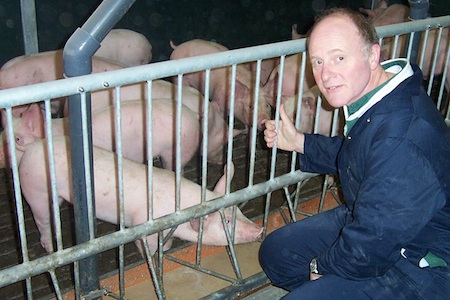
‘Smart pig farming’ — the application of Information and Communications Technology (ICT) — will offer hard-pushed pig farmers a way to remain competitive in the future.
“We are looking after more and more pigs with fewer and fewer man-hours. The impact of regulation relating to the environment, animal welfare and climate change, together with rapidly rising feed costs puts increasing pressure on management to raise its game,” Hugh Crabtree, managing director of Reading-based energy control specialist, told the 5th European Symposium of Porcine Health Management in Edinburgh, Scotland. The meeting was combined with the 50th Anniversary meeting of the British Pig Veterinary Society.
“Doing the basics right, which can be afforded now, will produce a very radical result. Major improvements will come from skilled operators using powerful ICT tools to maximise labour efficiency” he predicted.
“The current most-used ventilation system works perfectly well if correctly applied but we need to think of environment in its widest sense including water, feed, other pigs and humans as well as temperature and ventilation.”
Crabtree pointed out that accurately measuring such inputs as feed, water and temperature could give a good indication of the well-being of the pigs. ‘Real-time’ data will show what is happening and, when compared with averaged past data, will show what should be happening, enabling deviations from normal to be spotted early, aiding timely management interventions.
Monitoring had shown that there are potentially large gains to be made simply by doing the job better — more things right more of the time. “Is this such a radical change?” he asked. “It would be very radical indeed if 90 per cent of the market could achieve the performance which is currently only attained by the top 10 per cent of herds. The way to achieve that is to invest heavily in ICT because the cost of new buildings for everyone is too great.”
He pointed to the wide range of performance across herds enabling the top 10 per cent of herds to achieve a margin per pig over feed of £68.96 compared with £54.94 for the average.“
He advised greater investment in ICT tools, which have already been shown to deliver benefits, coupled with engagement of outsourced professional services from new production specialists.
Improvements could be achieved right across the board both in new and existing houses. Considerable energy waste reduction as well as improved growth rate and feed conversion would help finance the investment.
